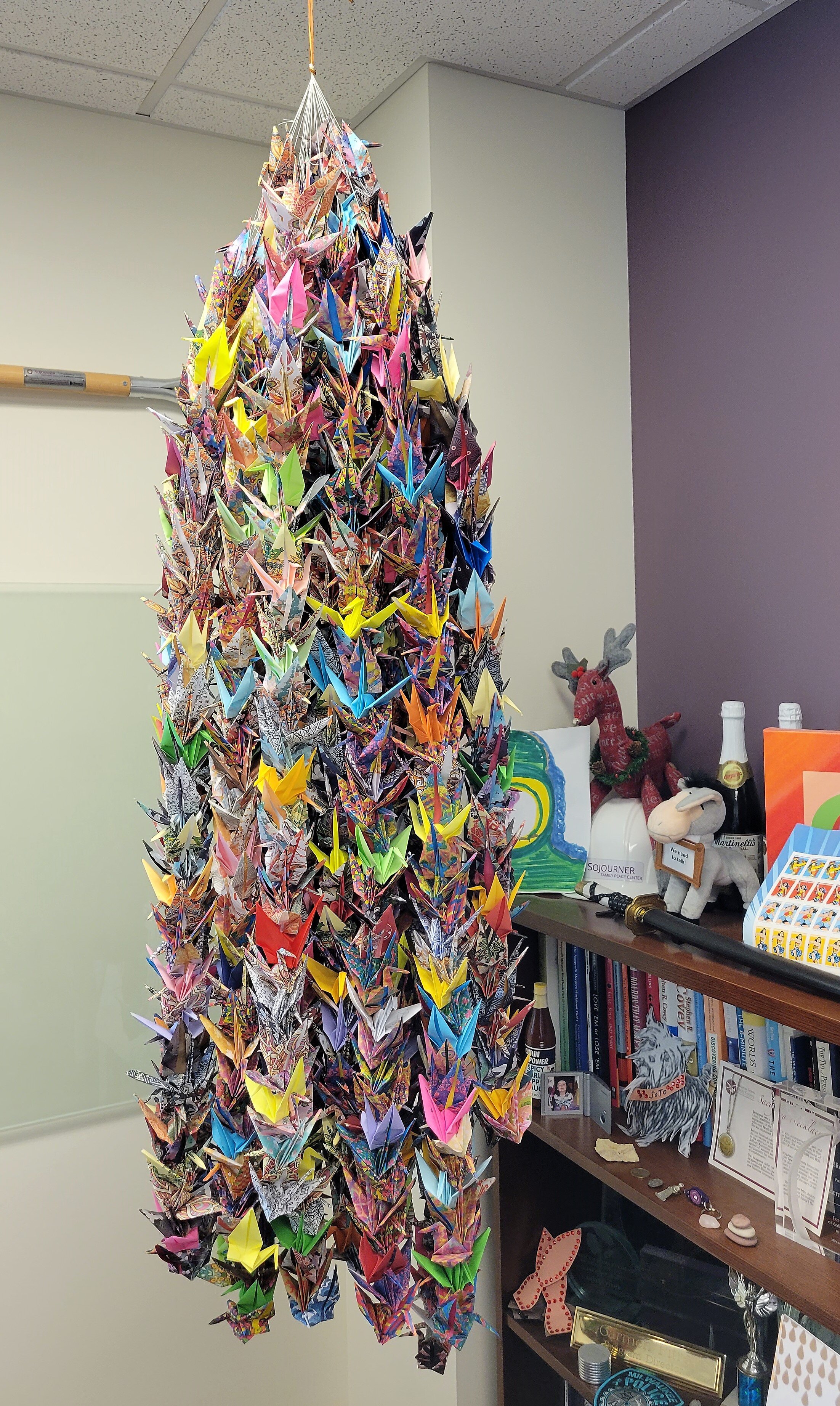A very special gift ... and a wish
We recently received a unique and incredibly thoughtful donation. Cookie Anderson, an agency friend, supporter and activist, created a hand-made a chandelier of 1,000 origami cranes for Sojourner. As Cookie presented Sojourner President and CEO Carmen Pitre with the cranes, she encouraged her to make a wish for the agency.
Carmen’s wish? To receive the needed support and resources to continue our lifesaving work and to respond to our community’s ever-changing needs.
The crane chandelier will be hung in the Family Peace Center for clients, visitors and staff to enjoy.
Thank you, Cookie, for such a special gift!

MEANING OF THE ORIGAMI CRANE
The Japanese word, “origami” is a combination of two words in Japanese: “ori” which means “to fold” and “kami” which means “paper”. It is believed that Japanese origami began in the 6th century and because of the high costs of paper, origami was only used for religious ceremonial purposes.
In Japan, the crane is a mystical creature and is believed to live for a thousand years. As a result, in the Japanese, Chinese and Korean culture, the crane represents good fortune and longevity. The Japanese refer to the crane as the “bird of happiness.” The wings of the crane were believed to carry souls up to paradise. Mothers who pray for the protection of the crane’s wings for their children will recite the prayer:
“O flock of heavenly cranes
cover my child with your wings.”
Traditionally, it was believed that if one folded 1,000 origami cranes, one’s wish would come true. It has also become a symbol of hope and healing during challenging times.
As a result, it has become popular to fold 1.000 cranes (in Japanese, called “senbazuru”). The cranes are strung together on strings – usually 25 strings of 40 cranes each – and given as gifts.
A famous story about senbazuru is that of Sadako Sasaki (see “Sadako and the Thousand Paper Cranes” by Eleanor Coerr [1977]). Sadako was a little girl who was exposed to radiation as an infant when the atomic bomb was dropped on Hiroshima. Although she survived the bomb, she was diagnosed with leukemia by the age of 12. She decided to fold 1,000 cranes, hoping that her wish to live would come true. Unfortunately, she only was able to fold 644 cranes before she passed away. Her classmates then continued to fold cranes in her honor and she was buried with a wreath of 1,000 cranes to honor her dream. There is now a statue of Sadako in Hiroshima Peace Park – a little girl standing with her hand outstretched, holding a paper crane. Every year, thousands of wreaths of senbazuru are draped over her statue. Source

